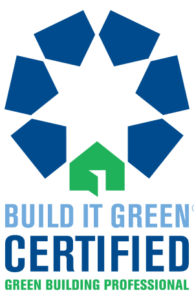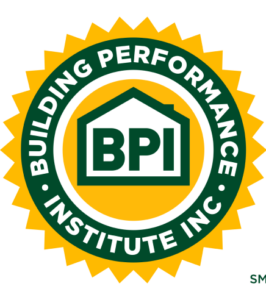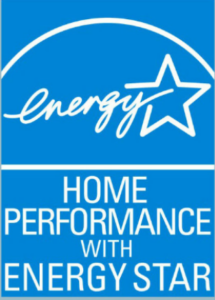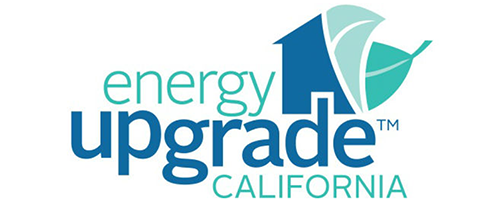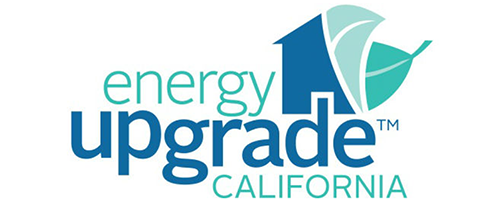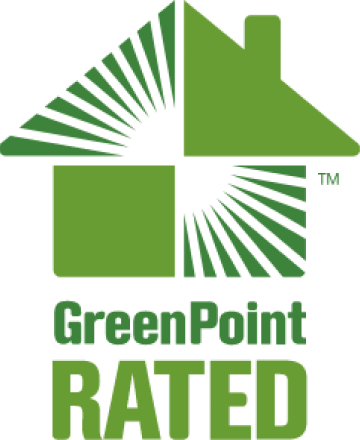Improving Your Home’s Indoor Air Quality
Introducing Fresh Air with Higher Oxygen Content
When you’re home, the air should be continuously refreshed with outside air. Our standard guideline is one complete air exchange with filtered outdoor air every three hours. This maintains excellent oxygen levels and helps reduce volatile organic compounds (VOCs) and other indoor air pollutants, ensuring a healthier living environment.
We can achieve this with a balanced ventilation system, such as an HRV (Heat Recovery Ventilation) or an ERV (Energy Recovery Ventilation), ducted to supply air to living spaces and to exhaust air from bathrooms and laundry rooms.
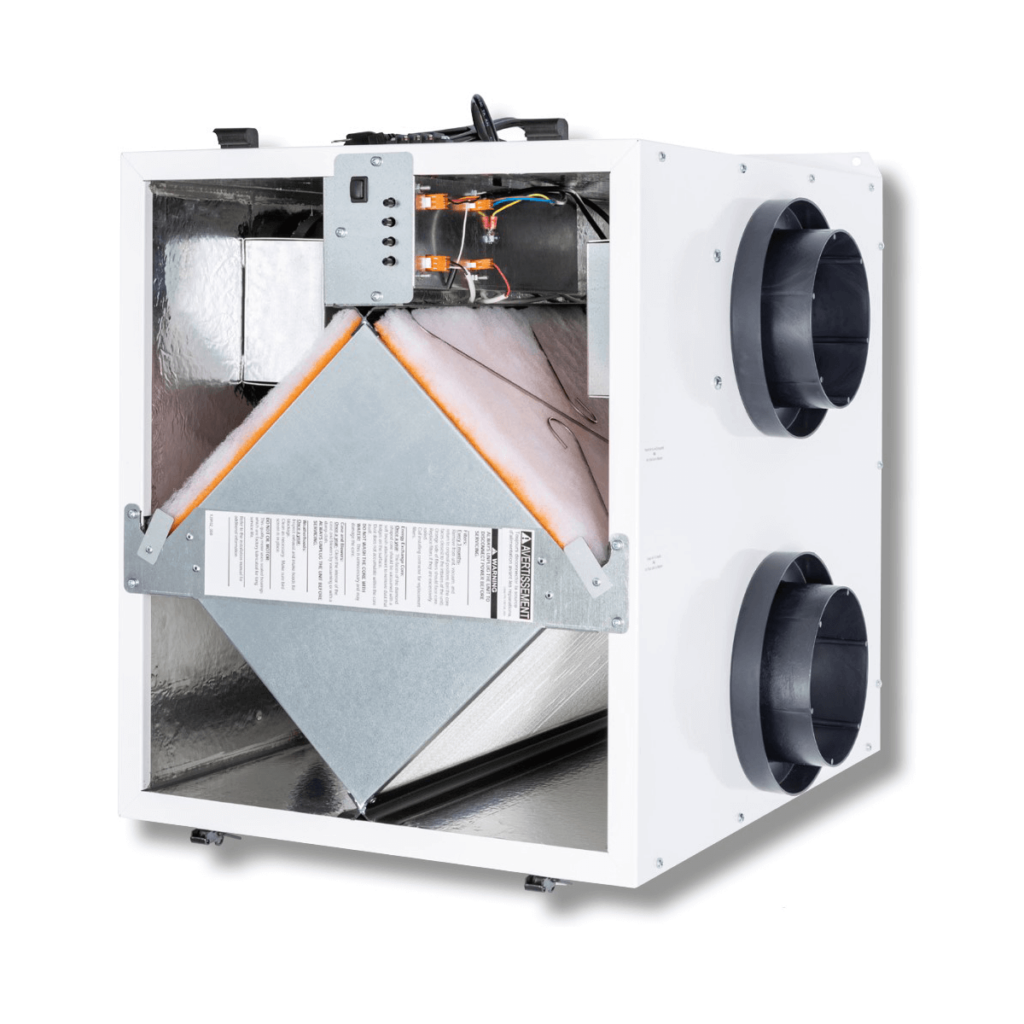

Reducing the Particulate Matter in Your Air
Your home’s filtration should remove harmful particulates from the air, including PM2.5, particulate matter smaller than 2.5 microns in diameter. These smaller particles can penetrate deep into the lungs and even enter the bloodstream.
We reduce particulates in three ways:
- Filtered Outdoor Air: Bringing in filtered air from outside while exhausting stale, dirty air helps reduce the level of particulates.
- High-Filtration Filters: Designing your heating and cooling system to accept high-filtration filters, such as MERV 13 or even HEPA, which are effective at capturing those tiny PM2.5 particulates.
- Sealed Ducts: We start by installing the filter at the grille to prevent particulates from entering the return duct and providing easy access for filter maintenance. We build our installations to achieve zero measurable leakage—ensuring contaminants won’t enter through leaky ducts.
“Kyle was courteous and professional, thorough in his estimation, took time to answer all questions, and gave thoughtful reasons for his recommendations. He put together a detailed customized project plan and worked within my budget. He was very quick to respond to follow up questions via email and by phone.
The crew was great to work with as well. They showed up on-time, were super careful doing the insulation work around our furniture and cleaned up nicely after the project. After the project was done, they took care of all the paperwork for the energy rebates with PG&E and I received my rebate check with weeks. Highly recommend Eco Performance Builders!”
Isolating the Sources of Air Contaminants
Particulates can come from many areas—often above or below your living space. We air-seal the attic-to-home barrier at the drywall and install a vapor barrier in the crawlspace to minimize the entry of dirt, dust, moisture, and soil contaminants into your home.
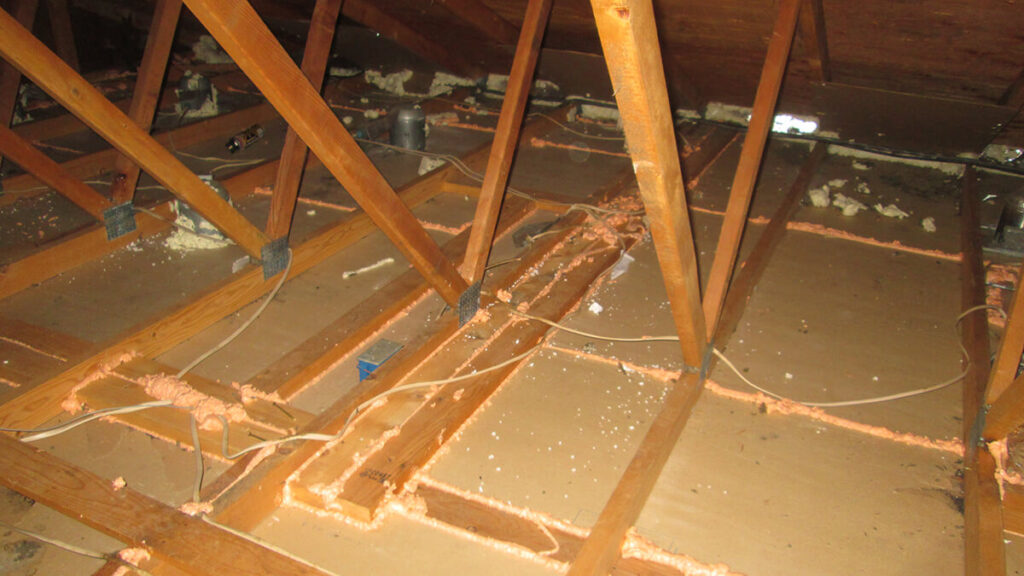
Effective ventilation and filtration are crucial for maintaining healthy indoor air. Poor ventilation can trap pollutants and moisture, leading to stale air, allergens, and even mold growth. Create a fresher, healthier environment while boosting energy efficiency in your home.
Which Type of Ventilation System is Best for My Home’s Air?
There are three main types of ventilation available to homeowners. Each has different characteristics, equipment, and rewards.
Balanced Ventilation Systems
Balanced ventilation is a two-part process. The system removes air from the home in bathrooms and utility rooms while at the same time supplying fresh filtered air to bedrooms and main areas. We typically balance these systems slightly positive for air quality purposes.
HRV (Heat Ventilation Recovery) or ERV (Energy Recovery Ventilation) systems exchange heat from hot to cold to retain some of the conditioned air inside your house while they ventilate.
How it works: During the warm season, already cool-conditioned air passes through a heat exchanger on its way out, cooling it. The hot outside air then passes through, transferring heat to the exchanger and cooling the air. This filtered air is then supplied to the house through small ducts. In the cold season, the system works in reverse, heating the incoming air before it enters the house for maximum efficiency.
Exhaust Ventilation Systems
Exhaust ventilation uses a fan to expel air, usually in bathrooms, to the outside.
As stagnant air is exhausted, new air comes in through open windows or cracks and leaks in the building. To make the most of these ventilation systems, we usually recommend setting exhaust fans to a low, continuous airflow. The amount of air that should be ventilated is calculated by factoring in your home’s size and occupancy.
However, this type of ventilation can increase harmful particulate matter if your attic and crawlspace aren’t perfectly sealed. Because we rely on the home to filter incoming air, we must stop it from entering through uncontrolled areas like attics and unsealed crawlspaces.
Finally, this type of ventilation also results in energy loss. Conditioned air is lost through the exhaust fan, while unconditioned air is brought in without the benefit of heat exchange.
Natural Ventilation
Natural ventilation involves air exchange through your house naturally.
One method is opening windows. Good wind pressure on one side of the house can effectively ventilate it. However, this depends on consistent pressure, only cycles some of the air, and can bring in dust, pollen, and other pollutants.
It’s also unlikely that you’ll keep your windows open when there is a significant temperature difference between inside and outside. Closing the windows then leads to stagnant, poor indoor air quality.
Even with the windows closed, your house may breathe on its own—depending on its leakiness and the pressure conditions. Unfortunately, this type of ventilation brings in dirty air from attics and crawl spaces and introduces other outside pollutants. It’s also inconsistent, which again results in stagnant, poor indoor air quality.
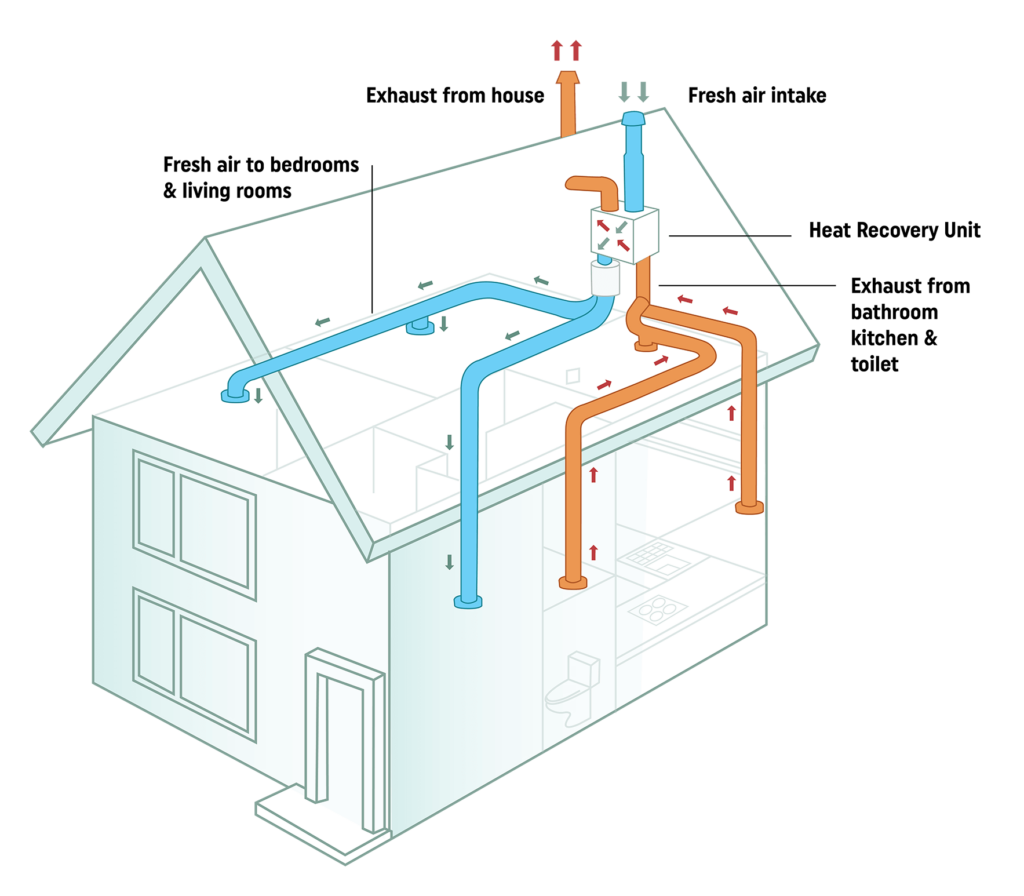

Schedule a Free Assessment
Your comprehensive assessment begins with an in-depth call with one of our home efficiency experts, where you can ask all your questions. During our conversation, we’ll ask about your goals, the current setup of your home comfort system, and any time and budget constraints you might have. If you want to move forward with a home evaluation, we can schedule it during your assessment.
"*" indicates required fields
